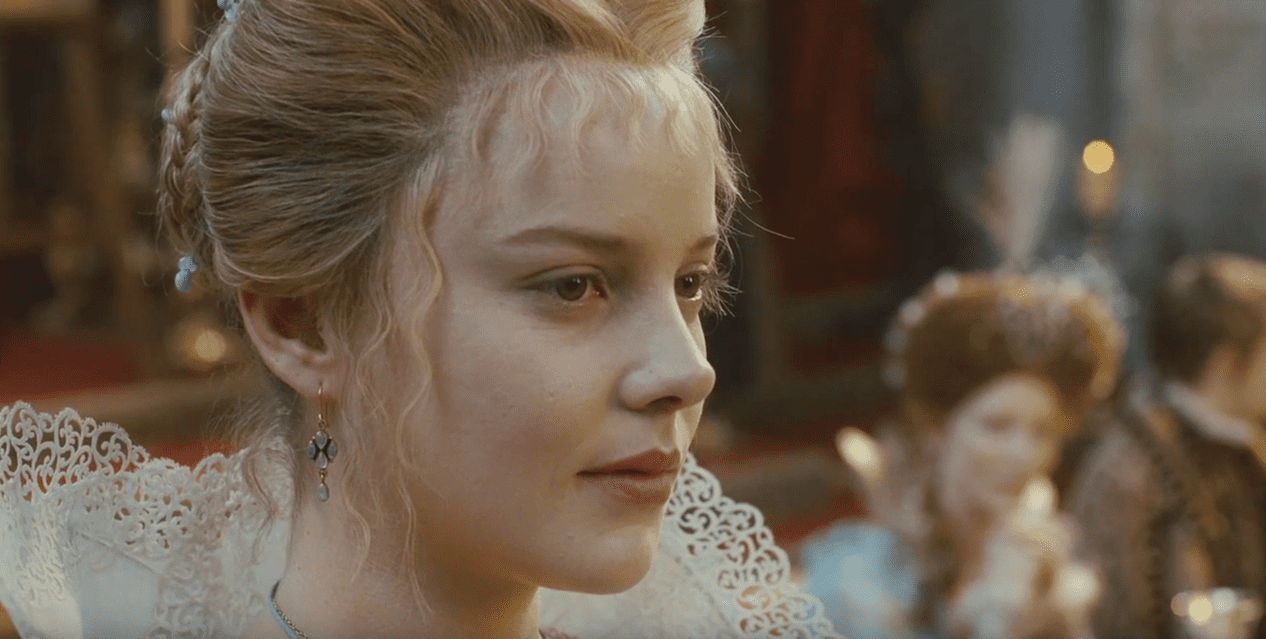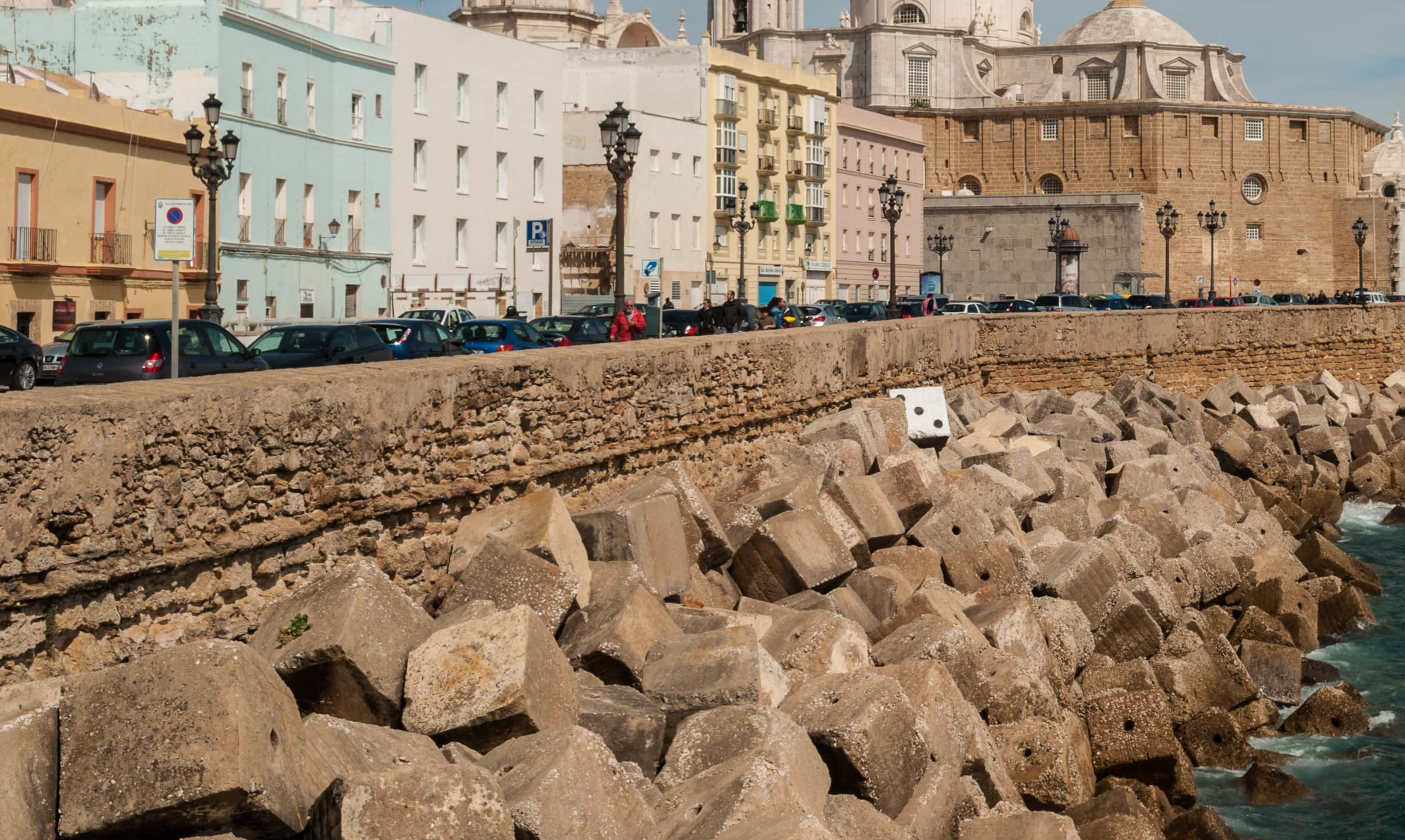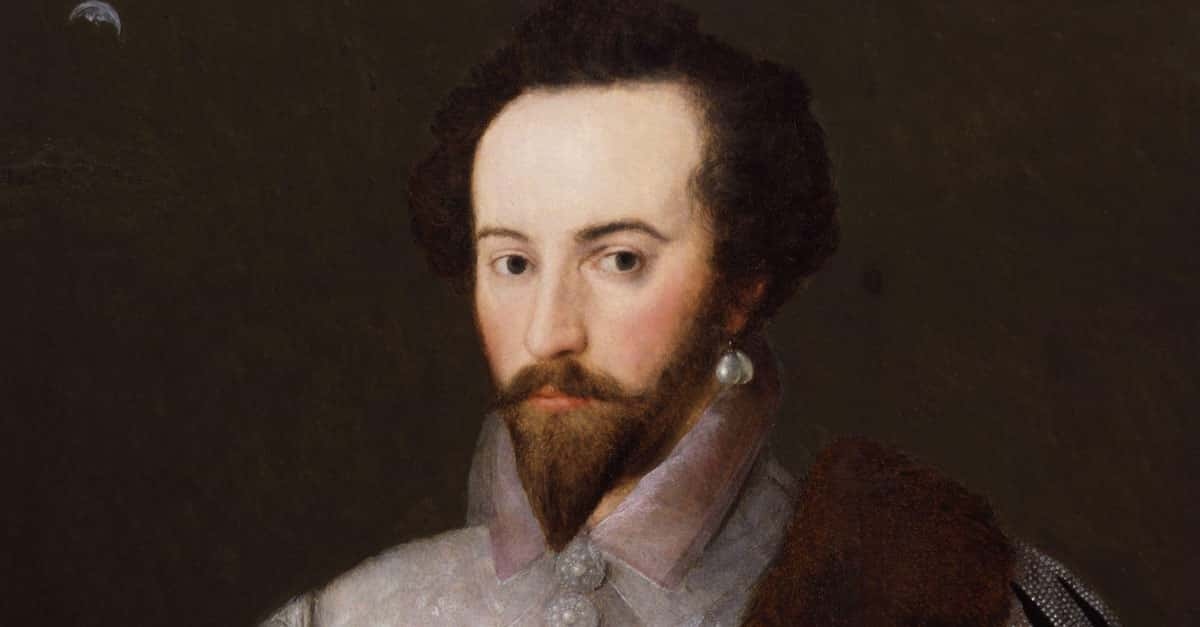Sir Walter Raleigh was a swashbuckling Renaissance man who had more than his fair share of wild stories. He was imprisoned in the Tower of London twice before he was finally executed by James I. He spent much of his adult life going on adventures at the behest of Queen Elizabeth I, who adored him, but his luxurious lifestyle made him more than a few enemies at the court as well. For some, his army career makes him a reprehensible figure. He was a particularly brutal soldier and landlord during his time in Ireland. So while his legacy is up for debate, what can’t be denied is the fact that Sir Walter Raleigh led a fascinating life, whether you think it was remarkable or notorious!
Sir Walter Raleigh Facts
41. Renaissance Man
Sir Walter Raleigh was not lacking careers during his life. Amongst his professions, Raleigh could count landed gentleman, politician, courtier, explorer, spy, soldier, poet, and writer. Between his conquests and battles in Ireland and across the Atlantic, Raleigh managed to write The History of the World—no small feat!

40. Ready for a Scrap
No matter where he went, it seemed that Raleigh was always ready for a fight. Or, maybe it’s more accurate to say he was always looking for a fight. After studying for a short while at Oxford University, Raleigh joined ranks with the Huguenots, a French Protestant group who were fighting against the Catholic rule in France.
39. The Golden Ticket
Although it was originally a Spanish legend, Raleigh is a big reason why the story of “El Dorado” remains with us today. The lost city of gold was rumored to exist somewhere in the northern part of South America. Raleigh sailed twice with the goal of discovering the fabled city, but was never successful. Still, he managed to “discover” what is now known as Guyana.
 Elizabeth: The Golden Age, Universal Pictures
Elizabeth: The Golden Age, Universal Pictures
38. Man Against God
Raleigh’s tendency to be disagreeable with other members of the court didn’t lead to many friendships. In fact, he was frequently called before the court to hear charges against his name. These charges were primarily revolved around “atheism." While, by all accounts, Raleigh believed in God, he still loved to get into heated debates about religion—often with the wrong crowd. He was once charged with atheism after he got into an argument with Reverend Ralph Ironsides at a dinner party. Some house guest.
 Elizabeth: The Golden Age, Universal Pictures
Elizabeth: The Golden Age, Universal Pictures
37. A Series of Surprise Witnesses, Each More Surprising Than the Last
When Raleigh was accused of treason in a plot against James I in 1603, he immediately knew what was best for his cause: himself! As a renaissance man, Raleigh naturally felt inclined to dabble in the law, and what better opportunity than a trial involving your own, probably trumped up, charges of treason? The main “evidence” of his guilt was a confession from Raleigh’s friend Henry Brooke, but the court refused to let Raleigh call Brooke to the trial. It was all rather suspicious, but nonetheless, Raleigh was found guilty and spent more than a decade in the Tower of London.
36. A Secret Society
In part because of his lavish lifestyle and fondness for controversy, it was often said that Raleigh was leading a coterie of men in a secret society that a Jesuit priest named Robert Persons dubbed “The School of Atheism.” The group was said to be comprised of Raleigh, Christopher Marlowe, Thomas Harriot, Matthew Roydon, and George Chapman. Scholars have since determined that no such group ever existed and it’s not clear that all the men even knew each other personally.
 Universal, Elizabeth: The Golden Age (2007)
Universal, Elizabeth: The Golden Age (2007)
35. They Come at Night
The legend of Raleigh’s “secret society” of atheists became so prominent that Shakespearean scholars came up with a new name for it in the early twentieth century. Arthur Acheson called the group the “School of Night,” taking the words from Shakespeare’s play Love’s Labour's Lost, though even this line was probably a mistake—it was more likely "suit of night" or "scowl of night" in the original play. Still, it’s a pretty cool name!
34. A New Favorite
Robert Devereux quickly became the great rival to Raleigh when it came to the attentions of Queen Elizabeth I. Unlike Raleigh, though, Devereux’s ambitions lay a little too close to home. While Raleigh was frequently thought to be plotting against the throne, Devereux actually did plot against Elizabeth in 1601. The former favorite the queen was tried for treason and executed in February of 1601.
 Universal, Elizabeth: The Golden Age (2007)
Universal, Elizabeth: The Golden Age (2007)
33. New World Order
Given his expertise a soldier and commander, Raleigh was a natural choice to lead the first British expedition tasked with setting up a permanent colony in the “New World.” When his expedition reached the shores of Roanoke Island, in the Outer Banks of what is today North Carolina, Raleigh called the land Virginia, after the Virgin Queen Elizabeth.
 Elizabeth: The Golden Age, Universal Pictures
Elizabeth: The Golden Age, Universal Pictures

History's most fascinating stories and darkest secrets, delivered to your inbox daily.
32. Delegating the Work
Sir Walter Raleigh never visited Roanoke, the colony he ostensibly founded. Instead, he sent his good friend John White to act as governor. Perhaps Raleigh saw what was in store for the colonists...
Between the harsh winters and their fighting with Native American tribes, the colony quickly disappeared. At one point, White left Roanoke to sail to England, and when he returned, the entire colony had simply vanished, with the only clue being the word "Croatoan" carved into a post. The mystery of the Lost Colony of Roanoke continues to puzzle historians even today.
31. Doing Time
During Raleigh’s 13-year stint in the Tower of London, for supposedly plotting against James I, he had a rather fruitful period of creative work. It was in this time that he wrote the two volumes of his History of the World, which was an account of antiquity. His visions of ancient Greece and Rome tended to double for his own exploratory views.
30. Gone by Greed
When James I finally released Raleigh from the penal institution, he made it clear that there was a suspended passing sentence on his head. Raleigh could continue his exploration for the British crown as long as he followed their rules. One of these rules was to avoid any conflict with the Spanish in South America, in order to avoid stoking an international conflict with the rival empire. So what does Raleigh do during his second attempt to discover “El Dorado”? Attack the Spanish, of course! Raleigh was ordered back to England where he was swiftly beheaded.
 Gunpowder, Treason & Plot (2004), BBC
Gunpowder, Treason & Plot (2004), BBC
29. Put a Cork in It
Perhaps one of the reasons that Raleigh became so famous in the court of Queen Elizabeth I was because he was so extravagant. He was well known for spending money as fast he could get it. His rewards from the queen tended to favor his wilder side. One of his major sources of income was the monopoly he was granted on grape beverage licences.
 Elizabeth: The Golden Age, Universal Pictures
Elizabeth: The Golden Age, Universal Pictures
28. Dangerous Liaisons
Raleigh’s wife, often called Bess, had several connections to Henry VIII, which was part of the reason she was so close to Elizabeth I. Some speculation has been raised that, in fact, Bess's grandmother was once the King's lover. Good thing she never got on his bad side!
 Elizabeth: The Golden Age, Universal Pictures
Elizabeth: The Golden Age, Universal Pictures
27. Splitting Up Families
Raleigh had run afoul of James I by the time Bess gave birth to their third son, Carew. Raleigh had to arrange for Carew to be christened in the Tower of London, inside the church of St Peter ad Vincula.
 Wikimedia Commons, Michael Coppins
Wikimedia Commons, Michael Coppins
26. It’s Bad for Your Health
As a world traveler, Raleigh quickly became a bit of a trendsetter in his native England. Having come across many different cultures across the globe, he was privy to all sorts of new fashions. Perhaps most famously, Raleigh was key to popularizing the use of plant for making smokes in England.
25. It Runs in the Family
Raleigh came from a family of adventure and army expertise. His half-brother, Sir Humphrey Gilbert, was a highly successful general for England. He was also a pretty terrible person. While putting down the Desmond Rebellions in Ireland, he frequently decapitated Irish men, women, and children and used their heads as a deterrent to further upheavals.
24. Work Release
When Raleigh was imprisoned in the Tower of London for the first time, he still had the trust of the queen who had put him there. When the British navy captured an extremely valuable Spanish merchant vessel off the coast of Flores, she released Raleigh briefly so that he could go and divvy up the spoils of the plunder. And for his troubles, he was put back in penal institution when he returned! He was freed shortly thereafter, at least.
 Elizabeth: The Golden Age, Universal Pictures
Elizabeth: The Golden Age, Universal Pictures
23. No One Suspects the English Invasion!
Raleigh was a key member of the force that landed in the Spanish city of Cádiz in 1596. The battle was one of the most successful for the British in all of the Anglo-Spanish Conflict. The city was sacked, burned, and plundered. Many of its most prominent citizens were taken as hostages. Raleigh was actually wounded in the fighting, but soon recovered. All in a day’s work!
 Wikimedia Commons, Michal Osmenda
Wikimedia Commons, Michal Osmenda
22. A True Gentleman
One of the more apocryphal stories about Raleigh has to do with the age-old “put-your-coat-in-a-puddle-for-the-queen” trick of chivalry. The name says it all, he once apparently took off his coat and laid it in a puddle so that Queen Elizabeth didn’t have to get wet.
 Elizabeth: The Golden Age, Universal Pictures
Elizabeth: The Golden Age, Universal Pictures
21. He Was Such a Stupid Git
Raleigh’s legacy is quite substantial, especially in popular culture. He even makes an appearance in a song from The Beatles’ White Album. In the track “I’m So Tired,” John Lennon bemoans the fact that he is going to have another smoke and blames Raleigh for making that thing so popular in England.
20. Hot Potato
For the longest time, people credited Raleigh for bringing the potato to the shores of Great Britain and Ireland after one of his many adventures to the “New World.” It certainly adds to his bad reputation amongst the Irish, even if it probably isn’t true. Raleigh couldn’t have encountered potatoes from any of the locations that he visited in his travels. Another one for the apocryphal pile!
 Elizabeth: The Golden Age, Universal Pictures
Elizabeth: The Golden Age, Universal Pictures
19. Blood Rights
After Raleigh was executed, Bess and their only surviving child, Carew, were denied the rights of blood that normally granted lawful inheritance of titles in the court. Apparently, Carew was denied these rights because when he was first presented to King James I, the King thought he was looking at the ghost of Raleigh. He was so spooked that he denied Carew the rights to titles, a ruling upheld until Charles I reversed the decision in 1628.
18. It was a Long Journey
Although Raleigh and his wife Bess remained loyal to each other throughout their lives, it’s hardly surprising to discover that loyalty didn’t always mean fidelity to Raleigh. While in Ireland, he had an illegitimate daughter with a local woman named Alice Goold.
 Universal, Elizabeth: The Golden Age (2007)
Universal, Elizabeth: The Golden Age (2007)
17. Where There’s a Will…
Perhaps the only reason historians know that Raleigh had an illegitimate child with a woman in Ireland named Alice Goold was because he mentions her in his will. He left the mysterious woman an unspecified amount of money—it was just too bad that Alice had already passed of the plague by the time that will would have come in to effect.
16. Taking Credit
Although Raleigh is normally credited for making lighting up fashionable in England, he picked up the habit from his friend Thomas Harriot. Harriot was a well-educated translator who ventured with Raleigh when he attempted to colonize Roanoke. Harriot learned to speak Algonquin, which is also when he took up the habit of lighting up.
 Universal, Elizabeth: The Golden Age (2007)
Universal, Elizabeth: The Golden Age (2007)
15. Looking to the Stars
Thomas Harriot was Raleigh’s main man when it came to all things language-oriented on his travels in the New World. Languages weren’t his only specialties, though; he was also an accomplished mathematician and astronomer. Although few of his recorded works still exist, he was known for creating some of the best early depictions of sunspots. He also has a crater on the moon named after him!
14. Saucy Scholarship
When Raleigh finally completed his tome The Historie of the World while sitting in the Tower of London, he actually thought it might be of great use to King James I, the one who had put him there in the first place. The king was less inclined to see the work as having much use value. He was apparently particularly upset about the way that Raleigh was “too sawcie in censuring Princes” (meaning insolent or presumptuous).
13. Bright Lights, Second-Largest City
Since Raleigh was responsible for founding Roanoke, the state of North Carolina named its capital after him in 1792. Raleigh, North Carolina continues to pay tribute to its namesake with a bronze statue in the middle of the city.
12. Twin Peaks
Sir Walter Raleigh’s legacy can be seen all over North America. Not only is Raleigh, North Carolina named after the Renaissance man, so is Mount Raleigh in British Columbia, Canada. His half-brother, Sir Humphrey, even has a mountain named after him right beside Mount Raleigh. That’s the hill the cartographer was willing to pass on, I guess.
11. Dropping a New ‘Dis Poem
Celebrity feuds are pretty much par for the course these days—can’t open Facebook or Twitter without someone saying something bad about someone else. Raleigh and fellow poet Christopher Marlowe had their own 16th-century version of these battles. Marlowe wrote his pastoral love poem “The Passionate Shepherd to His Love” in 1592. Raleigh immediately wrote a line-by-line refutation of Marlowe’s poem in his own pastoral called “The Nymph’s Reply to the Shepherd.” For what it’s worth, Raleigh’s is better—at least according to William Carlos Williams, who wrote the poem "Raleigh was Right" centuries later in 1940.
10. Good Company
Born in Devon, Raleigh was one of just many notable mariners from the county in Southwest England. He was known for being part of a generation of adventurers and army men including Sir Francis Drake, Sir Humphrey Gilbert, Sir Richard Grenville, and Sir Francis Chichester.
9. What’s in a Name
Spelling remained relatively informal and unsystematic in the English language until sometime around the 18th and early 19th century. So, for example, Sir Walter Raleigh never actually spelled his name “Raleigh.” At first, he alternated between “Rauley” or “Rauleygh.” Perhaps getting tired of switching back and forth, he decided after 1581 to give “Ralegh” a shot. It stuck, at least as far as, erm, Raleigh was concerned.
8. Keeping Secrets
I guess all that time Raleigh spent working as a spy for Queen Elizabeth I made him crave the thrill of secrecy: In 1591, Raleigh secretly married Elizabeth Throckmorton, one of the queen’s ladies-in-waiting. They married in secret because such romance was forbidden in the court. When their marriage was discovered in 1592, they were both imprisoned in the Tower of London for a few months.
 Elizabeth: The Golden Age, Universal Pictures
Elizabeth: The Golden Age, Universal Pictures
7. Traitor!
After Raleigh married one of Elizabeth's ladies in secret, the poor guy worked extremely hard to regain favor with her, only for the queen to up and pass on him in 1603. Naturally, his fiery temperament made him a target for political intrigue. Raleigh was quickly charged with treason for plotting to overthrow James I, Elizabeth’s successor. The Tower of London was becoming a rather familiar haunt for Raleigh at this point.
 Elizabeth: The Golden Age, Universal Pictures
Elizabeth: The Golden Age, Universal Pictures
6. Knight in Shining Armor
Raleigh is sometimes rumored to be one of Elizabeth I’s lovers, though of course this has never been proven. He was one of the queen’s favorite servants when he wasn’t off secretly marrying one of her ladies. The queen frequently rewarded Raleigh with land, titles, and riches. He, in turn, wrote some very loving poems about the Virgin Queen, including “A Vision upon the Fairy Queen.”
 Elizabeth: The Golden Age, Universal Pictures
Elizabeth: The Golden Age, Universal Pictures
5. With Friends Like These
Sir Walter Raleigh’s good friend Lawrence Keymis was principally responsible for Raleigh’s execution. During Raleigh’s second voyage to Guiana (as it was spelled then), Keymis was put in charge of a detachment of men. When Keymis and his army men stumbled upon a Spanish outpost, they charged, against the orders of Raleigh, who was told to avoid the Spanish at all costs. When word got back to Spain about what had happened, James I was forced to diplomatically follow through with the request to have Raleigh executed.
 Gunpowder, Treason & Plot (2004), BBC
Gunpowder, Treason & Plot (2004), BBC
4. Friendly Fire
Not only did Lawrence Keymis cause his friend Raleigh to be executed for attacking the Spanish in Guiana, but he was also responsible for the passing of Raleigh’s son, Walter. Keymis led his men on an ambush of a Spanish outpost in South America against Raleigh's wishes, and the young Walter was one of the army men under his command. Walter was shot and passed from the wound. Keymis begged Raleigh for forgiveness, but it never came. Keymis took his own life shortly thereafter.
 Universal, Elizabeth: The Golden Age (2007)
Universal, Elizabeth: The Golden Age (2007)
3. Putting Down the Rebellion
Raleigh has not been much liked in Ireland ever since he helped put down the Desmond Rebellion in Munster between 1579 and 1583. This suppression also included the gruesome and brutal Siege of Smerwick. Raleigh led a party of British army men who decapitated around 500 Spanish and Italian army men.
 Universal, Elizabeth: The Golden Age (2007)
Universal, Elizabeth: The Golden Age (2007)
2. Following Orders
The Siege and liquidation of Smerwick was one of the bloodiest moments of British rule in Ireland. Lord Grey de Wilton led his legion of men on the city of Smerwick where some 500 Spanish and Italian army men had landed to help the Catholic Irish overthrow British rule. After the Papal army men surrendered, de Wilton had all of the army men executed, with the exception of the captains and the gentlemen of high rank. Rumor has it that Raleigh was one of two commanders who were in charge of the executions.
 Elizabeth: The Golden Age, Universal Pictures
Elizabeth: The Golden Age, Universal Pictures
1. Don’t Lose Your Head
Chances are, Raleigh’s head and his body are buried in two different places. His body was initially buried outside Westminster, but his head was given to his wife Elizabeth. She had it embalmed and carried it around with her for the rest of her life. It was kept in a red bag and nobody fully knows what happened to it afterward. Gross.
 William Segar, Wikimedia Commons
William Segar, Wikimedia Commons
Sources: 1, 2, 3, 4, 5, 6, 7, 8, 9, 10, 11, 12, 13, 14, 15, 16, 17



























